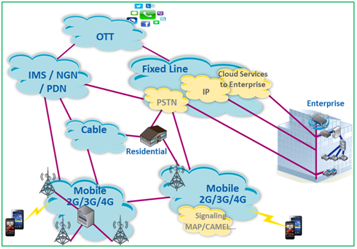
It would be nice sometimes to live in a bubble where you would only have to deal with what was in that bubble. If a Voice over LTE (VoLTE) network existed in a bubble, it would have known multimedia requirements in the form of the codecs and functions specified in the IR.92 and IR.94 voice and video specs. However, a VoLTE network , like us, does not exist in a bubble; that is, we both need to interact with our entire environment. It would be boring if we lived in a bubble anyway!
A VoLTE network must co-exist and communicate with other networks, such as 3G networks, wireline networks, WiFi networks and the technology and apps that work on them. As such, there will be very diverse codec requirements ranging from WebRTC codecs such as Opus, VP8 and VP9, to AMR-WB, iLBC, H.263, H.264, MPEG-4, G.711, G.729, etc.
Interacting with these various networks and technologies will require transcoding. Because codecs continually evolve, it’s imperative that your media server can evolve just as rapidly. A software media server can be upgraded to support new codecs relatively easily via a software upgrade. Conversely, a hardware or DSP based media server needs new cards, or new DSP firmware loads, to handle new codec support. Certainly it is not as easy or quick as a software upgrade.
Additionally, from a “network reality” perspective, there will be existing applications and media servers to deal with. Carriers are not expecting to decommission perfectly good equipment if they don’t have to. So as a VoLTE network is deployed, and value-added services are added, being able to handle these diverse multimedia resource requirements is critical.
A software-based media server is a great way to handle these requirements. As discussed above, new codecs come into play and a software upgrade can address the new codec.
Additionally, because it can control and work with multiple media servers at the same time, a media resource broker is a great way to keep the old, stodgy, iron-bound media server in the network (after all, it works) but marry it with a new, shiny, updated software-based media server that reflects the newest codecs and algorithms.
This way, the old existing working equipment and applications can stay in place and work in harmony with the new applications that use the new software-based media server.
Dialogic has both a software-based media server / MRF and a software-based Media Resource Broker (MRB) that can work with both the Dialogic PowerMedia media server / MRF and other media servers that adhere to specific interfaces. Likely your old DSP-based media server would be supported by our MRB. As such, you can address your new requirements with PowerMedia XMS and PowerMedia MRB while keeping your old media server around to handle the existing applications.








